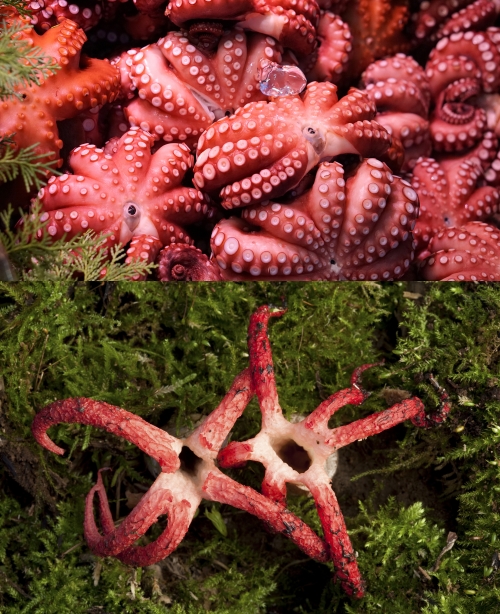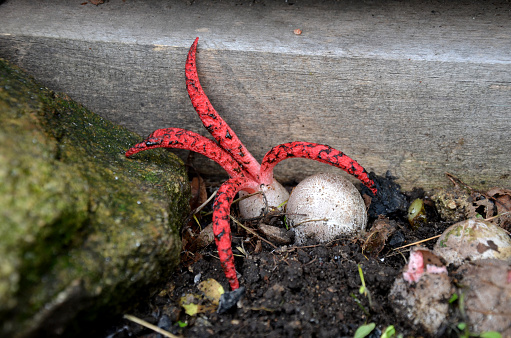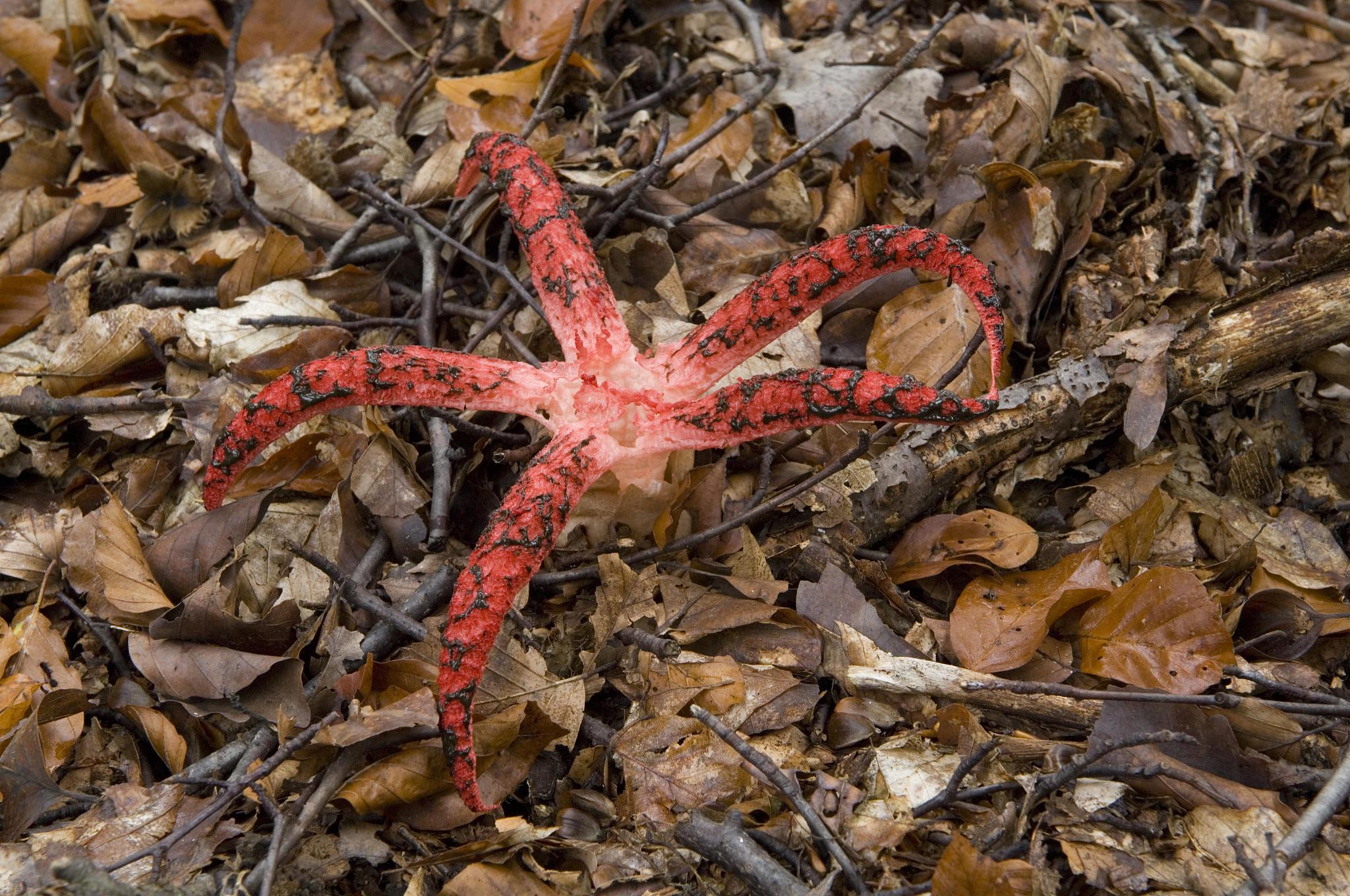You might have seen octopuses in the sea, on the market or on your plate, but have you ever seen an octopus in the woods? Octopus stinkhorn, or devil's fingers, has a great resemblance to octopuses. It often has three to eight slender red arms like the tentacles of an octopus or human fingers.

Octopuses in the market (upper) and two octopus stinkhorns (lower). /Getty
Octopuses in the market (upper) and two octopus stinkhorns (lower). /Getty
Unlike most fungi that sprout directly from the earth, the octopus stinkhorn emerges from an egg, usually around decaying wood chips or old stumps. When it turns mature, its arms will grow out of the egg on a short white stalk.

The fruiting body of the octopus stinkhorn grows from an egg. /Getty
The fruiting body of the octopus stinkhorn grows from an egg. /Getty
The arms are covered in brownish slime with a smell of rotten flesh. The disgusting smell might turn us away, but act as an invitation to flies and insects. When flies land on its arms, they can carry its spores contained in the slime off and spread to other places.

An octopus stinkhorn. /Getty
An octopus stinkhorn. /Getty
Despite the putrid smell and the scary look, the octopus stinkhorn is not known to be poisonous to humans and is even edible in the egg stage. You might not want to try it anyway. Native to New Zealand and Australia, the octopus stinkhorn can be found globally.

